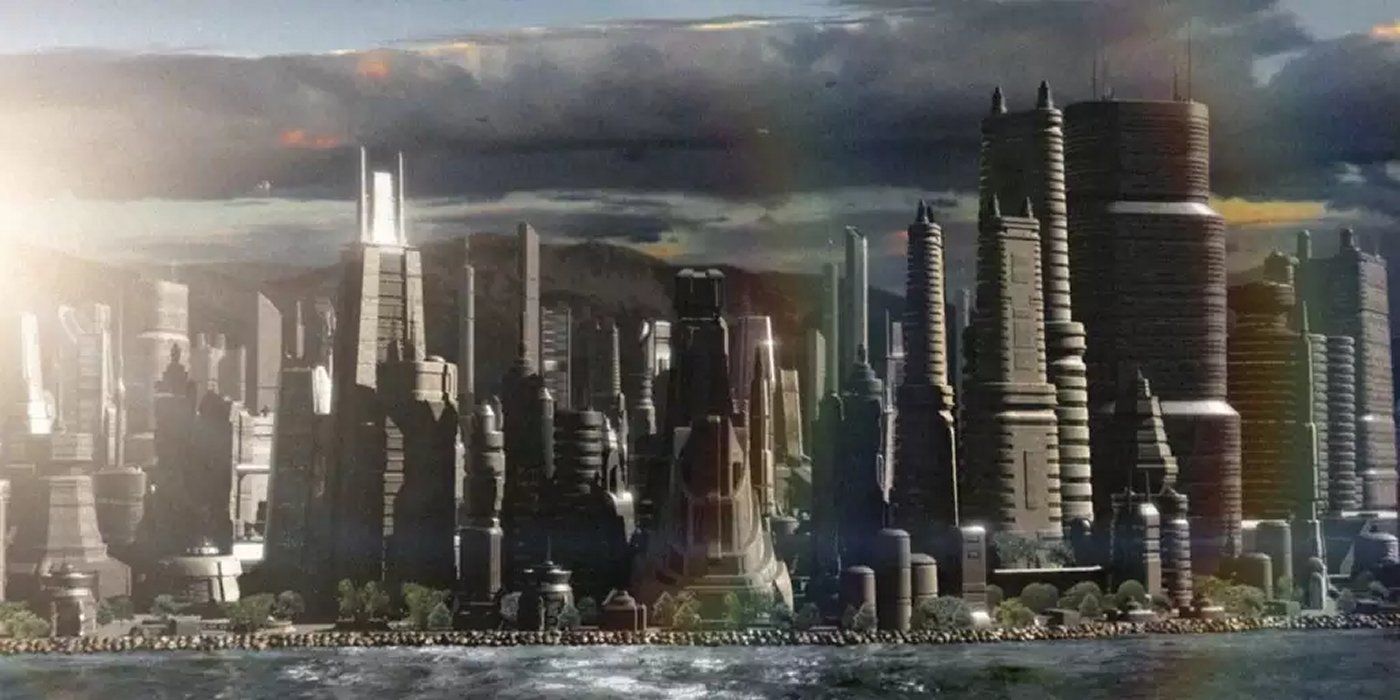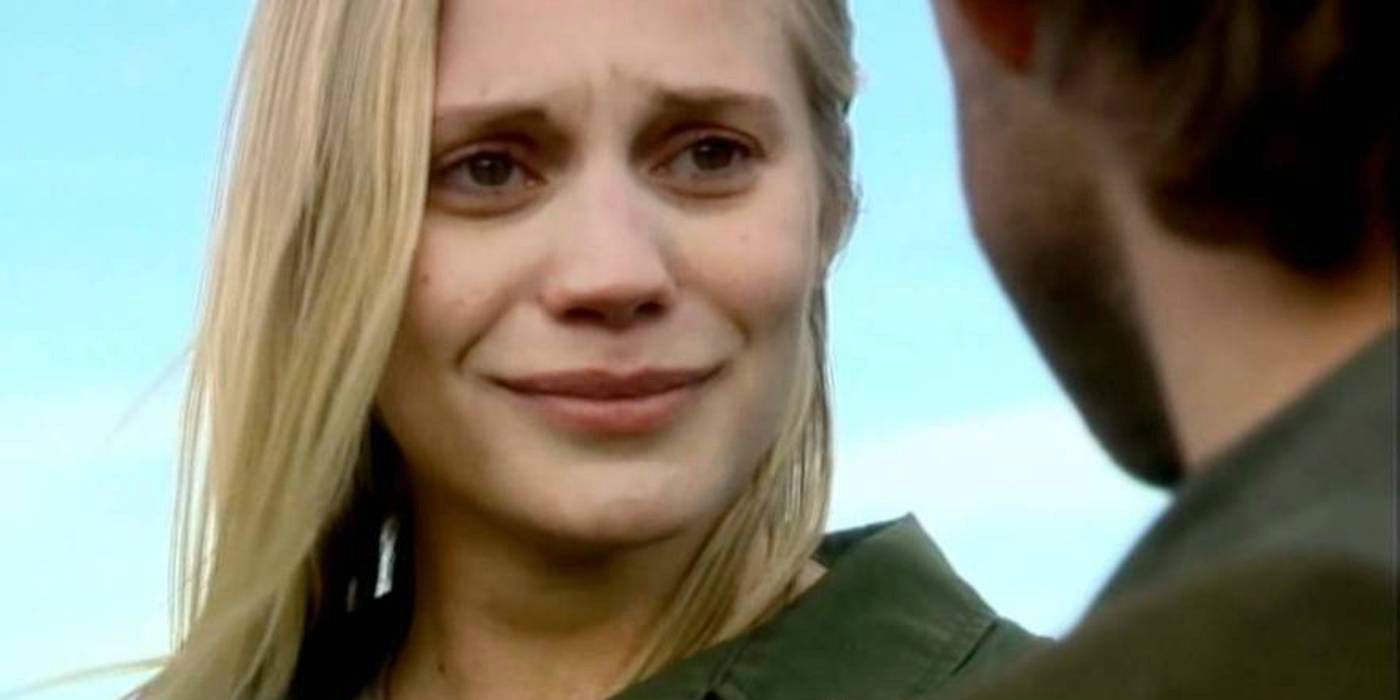Was Battllestar Galactica 2003 a Reboot or a Continuation
Peacock's Battlestar Galactica reboot is set to take place in the same continuity as the 2004 series, but it is not clear when the new series would take place in that timeline. Very little has been confirmed about the Peacock Battlestar Galactica TV series since it was announced in September 2019. While it is still in production, the only name attached to the series at this time is Sam Esmail as the producer.
The Battlestar Galactica franchise started with the original series in 1978, coming from the mind of Glen A. Larson. The series only ran for 1 season, but a sequel series was produced afterward called Galactica 1980, as well as a series of book adaptations and other media. After multiple attempts to revive the franchise, the 2003 Battlestar Galactica mini-series from Ronald D. Moore functioned as a complete reboot rather than a sequel and successfully spawned a full Battlestar Galactica TV series that ran for 4 seasons and told a complete story that saw humanity and Cylons come to coexist on Earth. The 2004 Battlestar Galactica series in turn launched a single season prequel, Caprica, which was set 58 years before the events of the new series.
As Peacock's Battlestar Galactica TV series will take place in the same continuity as the 2004 Battlestar Galactica and Caprica, the timeline is already fairly well established. This leaves limitations and complications on how and when Peacock could fit their Battlestar Galactica TV series into the existing timelines. Here is a comparison of the 3 best options that exist for when Peacock's Battlestar Galactica reboot will take place.
Peacock's Battlestar Galactica Could Be An Origins Prequel

When the Battlestar Galactica spinoff Caprica was launched, it was set to explain the original creation of the Cylons. The series attempted to distance itself from the original series, feeling that the space-war backdrop was deterring some viewers. While the series was set in the same universe and mythos as Battlestar Galactica, it had a very different feel and vibe. While this was a bold choice, reception to the series was poor.
The new Peacock Battlestar Galactica would not want to make the same mistake as Caprica, and the timeline for a near-prequel to Battlestar Galactica is already crowded. It is clear that a Battlestar Galactica series will need to include space travel and Cylons to be successful, so a prequel set between the two Cylon wars would likely fail to the defined lack of Cylons. While a prequel set during the first Cylon war could be successful, it would have a limited time frame and a pre-established outcome as it is all documented in the 2004 Battlestar Galactica.
However, if Peacock's Battlestar Galactica looks back further in the continuity, it could find success in an origins prequel series. The Lords of Kobol in the Battlestar Galactica mythos appear to have been based on real people, and the ruins of Kobol appear within the series. Battlestar Galactica is set in a universe where part of the mythos is that time and events are cyclical and will repeat themselves. By going all the way back to the original Kobol, Peacock's Battlestar Galactica can shed light on the mysterious lore behind the 2004 Battlestar Galactica while still being able to define the look and feel of the show as fresh with homages to the previous series.
The Battlestar Galactica Revival Might Parallel The 2000s Show

The second reasonable possibility for a place in the timeline for Peacock's Battlestar Galactica revival would be to have it take place in the same era as the 2004 Battlestar Galactica series. A previous spinoff, Razor, explained how the Battlestar Pegasus has secretly survived the attack on the Twelve Colonies and it was later able to meet up with the Battlestar Galactica. Peacock's Battlestar Galactica could follow another Battlestar that had survived the attack but went in a different direction to Pegasus and Galactica. The 2004 Battlestar Galactica saw the plot-driven by a religious pilgrimage, and if the new Battlestar did not have members with those same drives, then it would make sense for the ship to take a very different path in the universe. However, this would require the new series to find a compelling explanation for why Galactica was unaware of their existence, and revealing other survivors could risk undercutting the concept of the original show that focused on the dwindling number of survivors of the human race.
A New Battlestar Galactica Could Serve As A Direct Sequel

The 2004 Battlestar Galactica series concludes with the survivors of the human and Cylon races arriving on a planet where they plan to settle. Laura Roslin finally succumbs to her illness, while Starbuck is revealed to have been a mystical reincarnation and disappears. The rest of the survivors settle down before a time jump into the future shows that they landed on the planet 150,000 years before the present day and that that planet is in fact our own Earth.
Setting Peacock's Battlestar Galactica as a direct sequel to the 2004 series would perhaps present the least complications. The only part of the story that is already written and pre-defined is that survivors remain on the planet to create a new Cyclon-Human hybrid species. This would only require a relatively small number of the survivors to stay behind and could allow other people to head back into space. The biggest complication to setting the new series as a sequel is that at the end of the 2004 series, the survivors destroyed their ships and planned to live life without technology to break the cycle of violence. The new Battlestar Galacticaseries would need to explain how and why any portion of the population would then want to go back to space, and what materials they would use for it. It is likely that the people on the planet have all the knowledge of space travel that they might need to be able to rebuild a ship, but it would effectively require a separatist group to form and could uncut the whole message of the original finale.
If Peacock's Battlestar Galactica did choose to follow this path, then there would be positive aspects to how they could bring back elements of the 2004 Battlestar Galactica series. The survivors building a new ship could choose to name the ship Galactica after the previous vessel, allowing them to keep the same name in the same manner as Star Trek's Enterprise. Similarly, by setting the new Battlestar Galactica series in the future, the series would be able to have some familiar faces return from the original cast, assuming that the actors were available and interested and the time jump from the end of the previous season was not as large. Even with a larger time jump, three notable actors could still return. Katee Sackoff, James Callis, and Tricia Heifer, who play Starbuck, Gaius Baltar, and Number Six respectively can all appear in the new series. At some point, each of these actors play a version of their character who is revealed to be some form of angel or messenger, and thus they could potentially appear as those figures in any time period. Peacock's Battlestar Galactica TV series has some big shoes to fill and a devoted fanbase to appease, and while it will face many hurdles, picking the right time period within the continuity is going to be Peacock's first and biggest challenge.
Source: https://screenrant.com/battlestar-galactica-reboot-timeline-2004-comparison-options/
0 Response to "Was Battllestar Galactica 2003 a Reboot or a Continuation"
Post a Comment